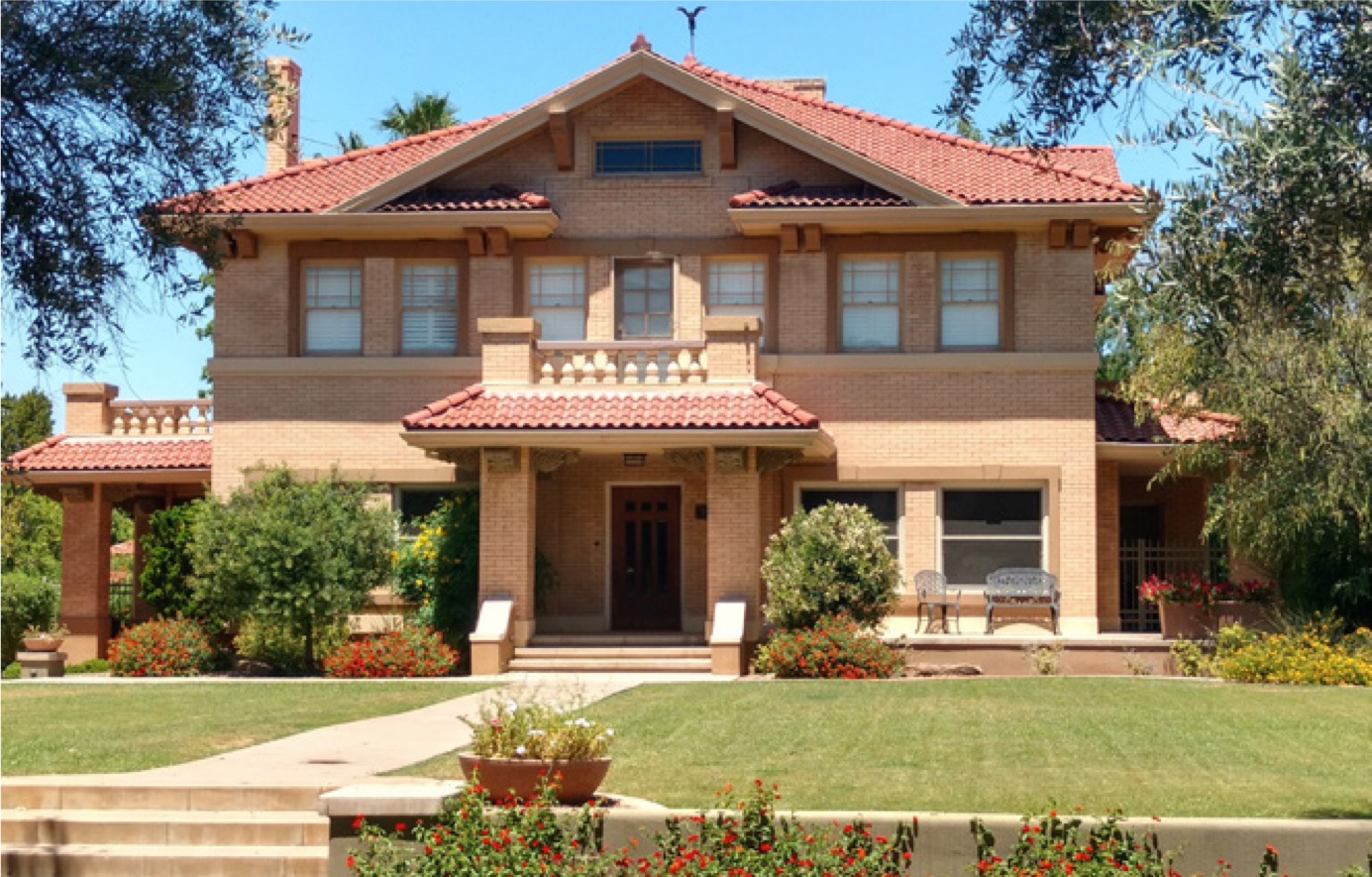
1. Alvarado
Nestled behind the Heard Museum, Alvarado is an enclave of large lots and estate properties. The district features the Carter Gibbes House, the foremost example of the Tudor Revival style in Arizona. Large lawns and mature landscaping are a dramatic contrast to the high-rise context of Central Avenue just two blocks to the west. Alvarado is also bordered by several 40s and 50s apartment complexes and low-rise offices, so its setting and context are not likely to change in the near future.
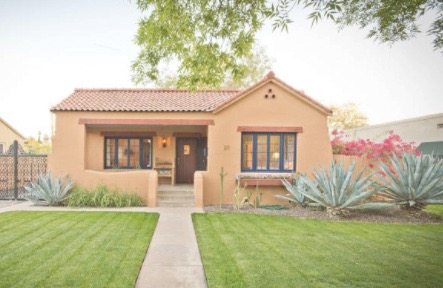
2. Ashland Place
If there is a hidden residential gem in the Central corridor, Ashland Place might just be it. On two streets, the long block between Central and Third Street on Hoover and Vernon is a throwback to the mid-1920s, yet just off the light rail line. Ashland Place features narrow streets, original streetlights, green vegetation, and houses built from 1923-1927. Most homes are of the “Period Cottage” and Spanish Colonial styles, and are carefully restored and very well maintained. To the north, Ashland Street transitions to a 1940s ranch context which offers its own character, all part of a tight-knit midtown neighborhood.
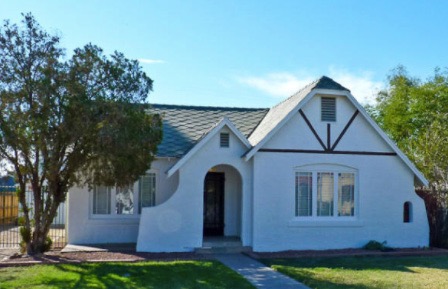
3. Brentwood
Just south of McDowell and tucked between 16th Street and SR 51, Brentwood is a collection of Bungalows and various Period Revival styles. Architecturally there are lots of options. This is a neighborhood with great potential. Rehabilitation activity is just getting started, and the proximity to Good Samaritan and Phoenix Children’s Hospital is likely to have a major impact.
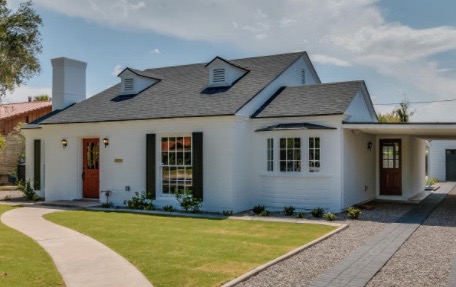
4. Campus Vista
Literally at the edge of the Phoenix College campus, the Campus Vista neighborhood personifies the early to mid 1940s. The modest ranch houses, all similar in scale and placed on gently curving streets, reflect the emergence of Modernism and the classic mid-century forms. Just far enough off the beaten path, Campus Vista offers a slightly suburban character, yet is still in midtown, and accessible to the active Melrose retail and restaurant corridor on 7th Avenue.
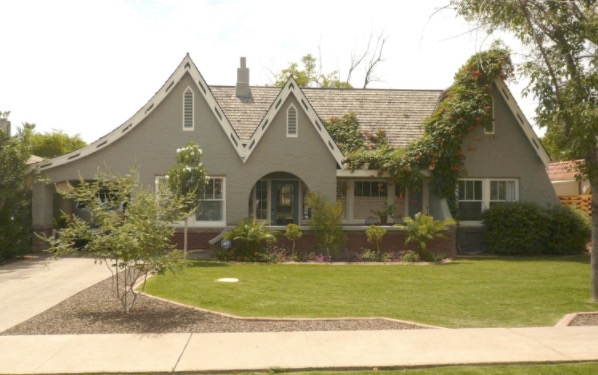
5. Cheery Lynn
Another hidden gem, Cheery Lynn is a neighborhood where the ambience is created by the architecture and setting. The two streets, Cheery Lynn and Earll Drive, offer a clear choice for anyone wanting historic character, yet needing quick access to 16th Street to head uptown or downtown. In 1929, Cheery Lynn was the vision of H.M. Strough, a homebuilder who migrated from Los Angeles and personally constructed most of these homes during the Depression years. Many of the houses are in the Monterey style, giving the neighborhood an image that is architecturally distinct from other neighborhoods.
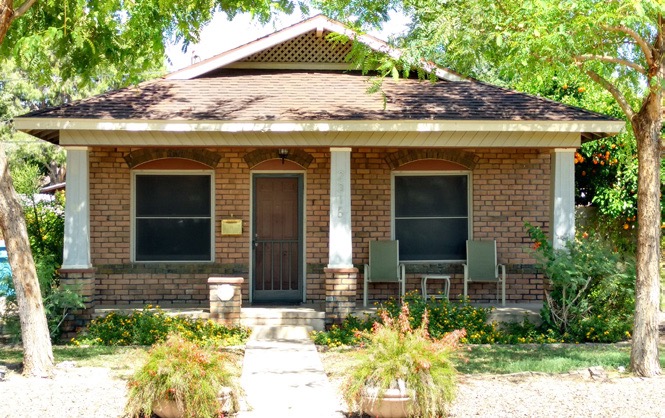
6. Coronado
One of the largest of the historic districts, Coronado is an amalgamation of modest architectural styles, yet has a very strong identity and character. The northwestern portion, known as the Fowler Tract, (just north of Sheridan, which was the end of the 10th Street trolley line), features the many Craftsman Bungalows. The Bungalows and Spanish Colonial Revival styles in the west portion of Coronado transition to the ranch houses of the 1940s further east, clustered around Coronado Park, a 1936 WPA project. As the “starter neighborhood” for many historic district residents, Coronado is a very socially cohesive and organized neighborhood, attracting an eclectic mix of residents who support several thriving restaurants located within the neighborhood and along 7th Street. Rehab and restoration efforts are visible on every block, often adjacent to very contemporary infill designs.
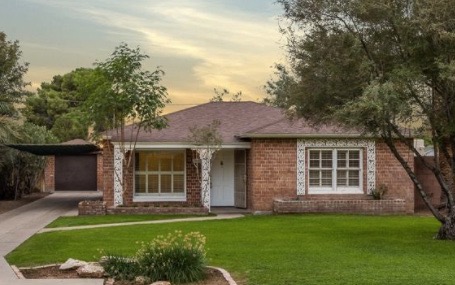
7. Country Club Park
County Club Park combines curvilinear streets and modest ranch houses, all built in 1939 to meet the “new” financing guidelines from the Federal Housing Administration that emphasized consistency in architectural design. The street layout allowed for the creation of a central open space to be shared by the neighbors - now a public park where neighbors often mingle. The district is a remarkably intact slice of time, now enhanced by period streetlights installed after the neighborhood banded together to raise funds and worked with the City of Phoenix to add authentic fixtures to enhance the neighborhood image.
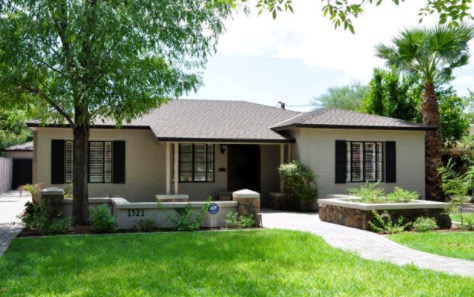
8. Del Norte Place
Developed and laid out in 1927 by Dr. Norton, just south of his large estate on 7th Avenue, Del Norte has the advantage of being bordered by the Norton property on the north. The streets do not go through, so Del Norte has a quiet character with minimal traffic. The architecture is dominated by the English Cottage and Tudor Revival styles, with the typical range of other competing styles from the late 20th century.
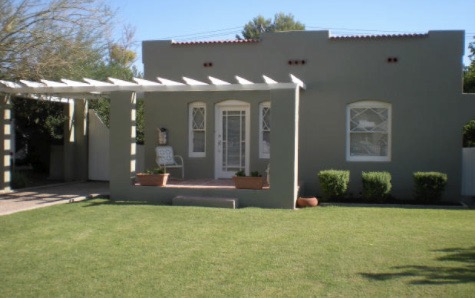
9. Earll Place
Essentially a one-block district, Earll Place was created in 1927 by E.A. Earll. These houses were built to be modest cottages. The lots are large, the houses set back and private. There are no curbs so the district has a vaguely rural character, clearly a departure from the adjacent blocks.
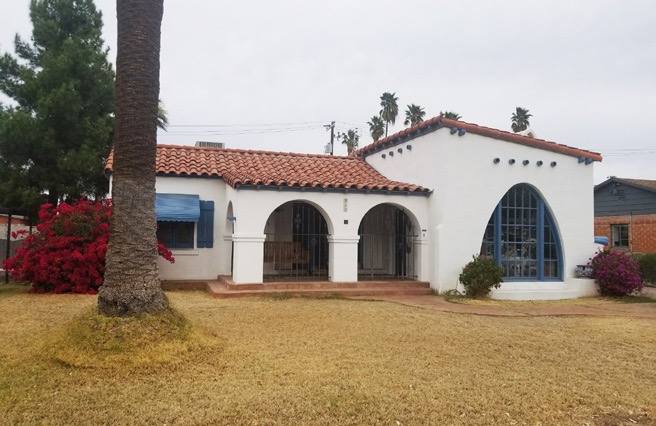
10. East Alvarado
Platted in 1929, East Alvarado was not built until FHA financing and design regulations were available, resulting in virtually all the houses being built between 1937 and 1942. East Alvarado is one of the few neighborhoods that showcase the earliest ranch house forms, mostly the Monterey and French Provincial styles. Built just prior to World War 2, the homes were still being individualized by their builders in the last years before the onset of mass production. The East Alvarado District is a single street, between 3rd and 7th streets, at the edge of midtown, but closely tied to Alvarado and the garden apartments and low-scale office complexes along 3rd Street.
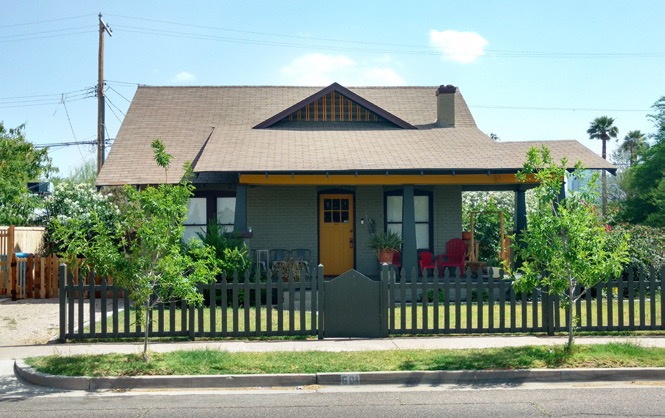
11. East Evergreen
This neighborhood is at the northeastern edge of downtown, and has some of the few vestiges of turn-of-the-century architecture still standing just north of the I-10 freeway. Situated to the east of the midtown cultural district and main library, the neighborhood features mixed-uses and office conversions that are interspersed with private residences. It is one of the few neighborhoods where this blending occurs anywhere in the central core of Phoenix. A great fit for live-work enthusiasts who would benefit from the blend of uses not available in other purely residential districts.
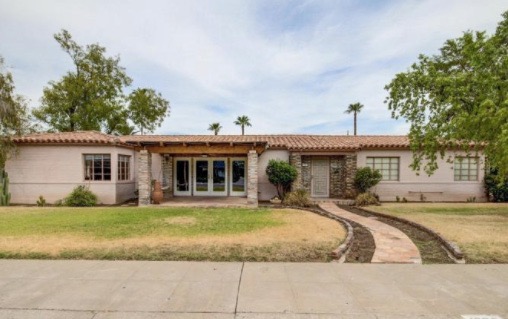
12. Encanto Manor
Developed from 1945-1955, Encanto Manor is a one of the first neighborhoods that is entirely post-World War 2 in architecture, design, expansive lot sizes and layout. In response to the rapid demand for housing, 52 builders created expansive ranch-style designs, establishing the dominance of the ranch as the post-war house type. Located at the northern edge of Encanto Park, this neighborhood was a highly prized location and a showcase for the builders. Its relative isolation from through traffic adds to its appeal today.
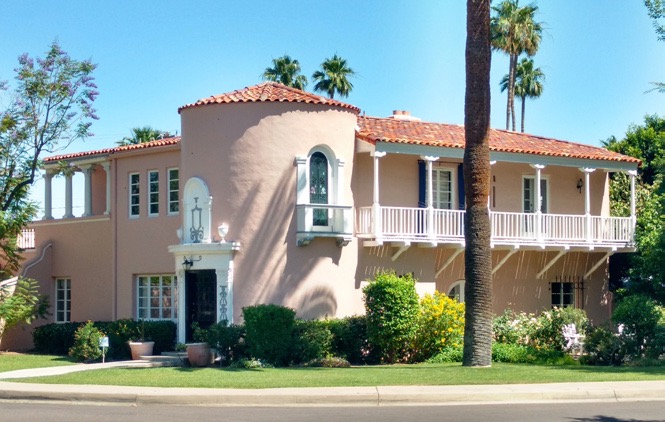
13. Encanto-Palmcroft
The Encanto and Palmcroft neighborhoods have been a prestigious address since 1928 when these subdivisions offered an enchanted “garden” community. The image was based on the prevailing national trend for curvilinear streets, streetlights and lush landscaping. Encanto was immediately the place to be, as wealthy residents moved from the downtown neighborhoods to the edge of the city – and commuting by car added to the prestige. Still an enclave of affluent residents, Encanto offers a diverse range of architectural styles, and still appears as virtually unchanged in scale and appearance. Encanto Boulevard forms the border between the neighborhood and Encanto Park, with the lake and public golf course.
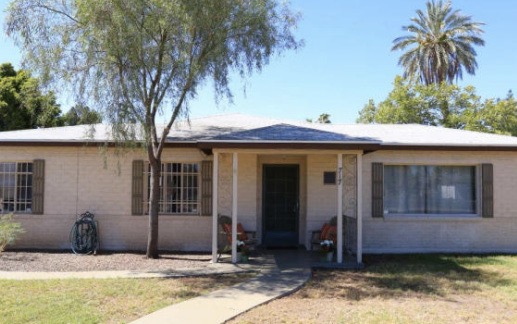
14. Encanto Vista
Among the central city districts, Encanto Vista is a notable collection of post-World War 2 ranch houses. Located between the Willo neighborhood to the east and Encanto Park to the west, Encanto Vista enjoys a quiet location, with no through traffic.
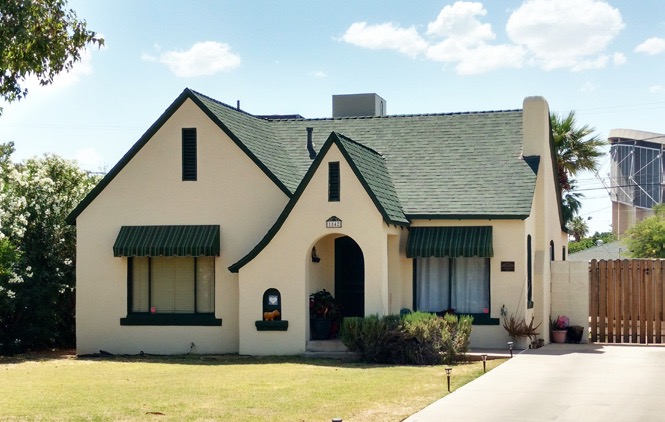
15. Fairview Place
No surprise, Fairview Place is the modest neighborhood that grew up alongside the State fairgrounds. Laid out in 1916, Fairview was one of the earliest subdivisions in Phoenix, which accounts for the narrow lots. Some construction occurred during the 1920s and 1930s, but the neighborhood was not completed until after 1945. The houses are small, but there is an eclectic mix of styles that make Fairview unique. In recent years, neighborhood residents have been very strong in supporting restoration efforts. There is a range of styles, with some homes dating to the late 1920s, but the ubiquitous early 1940s Ranch House dominates.
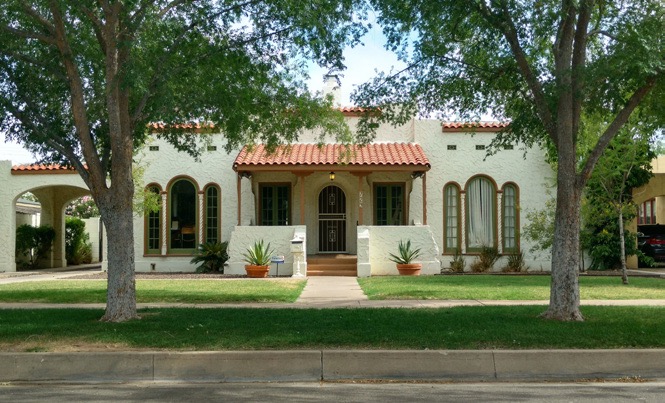
16. F. Q. Story
If one historic district had it all, F.Q. Story may be the leading contender among the districts, certainly in the downtown. The neighborhood has a very broad range of styles from the 1920s, mostly Tudor and Period Cottages. The development reflects the 1920s with a strong rectangular plan, uniform setbacks and consistent design. The east side of the neighborhood near 7th Avenue is visibly older, because, quite simply, these houses were a shorter walk to the 3rd Avenue streetcar line. Today the neighborhood boasts a very strong social network. Historic preservation has always been a neighborhood priority. Authentic restoration is encouraged, perhaps expected. Due to the I-10 freeway, most of the neighborhood is isolated from major cut-through traffic.
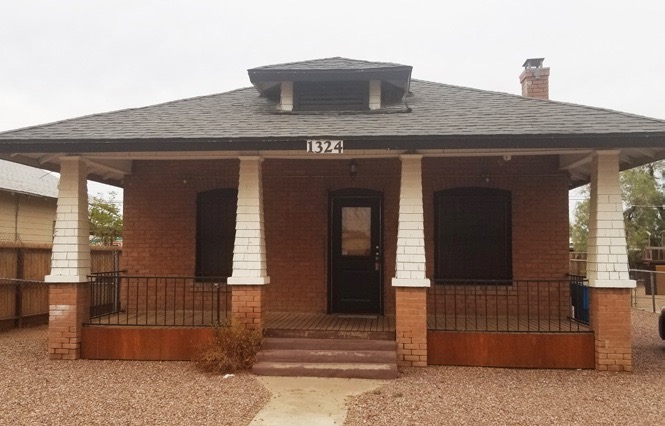
17. Garfield/North Garfield
Located east of 7th Street, literally at the east edge of the downtown core, the Garfield neighborhoods are the affordable option for central city urban convenience. Garfield is at the edge of the thriving art scene, which is bringing new interest and investment. The Alwun House at 12th Street and Roosevelt is a Garfield landmark and a center for alternative art and performances. Garfield has a unique multi-ethnic heritage and culture, and diverse socio-economic profile. The neighborhood offers an architectural mix from the late Victorian period to the Bungalows of the early 1920s. The Pieri House on Portland Street is perhaps the best example of the Prairie Style in Phoenix.
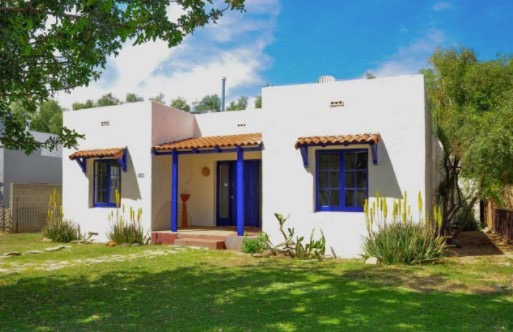
18. Idylwilde Park
Situated on the west side of 12th Street, Idylwilde Park is unique in that the houses in this subdivision surround a three-acre, common-area “backyard” park, owned and maintained by the residents. The Period-Revival and Tudor houses face the streets, are small and set close together, but the park makes up for their dense placement. Located between Osborn and Indian School, Idylwilde Park offers a unique amenity in an area that is transitioning to more mixed uses and several types of more contemporary infill housing.
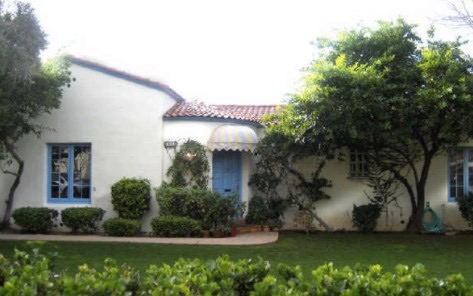
19. La Hacienda
Another isolated gem, La Hacienda, between 3rd Street and Thomas, is a superb collection of late 1920s and 30s houses. It is one of the few areas where adobe homes are common, interspersed with other styles and materials. Lot sizes and house sizes vary, giving La Hacienda a unique spatial quality. With limited access points, La Hacienda is a very quiet residential enclave. 14
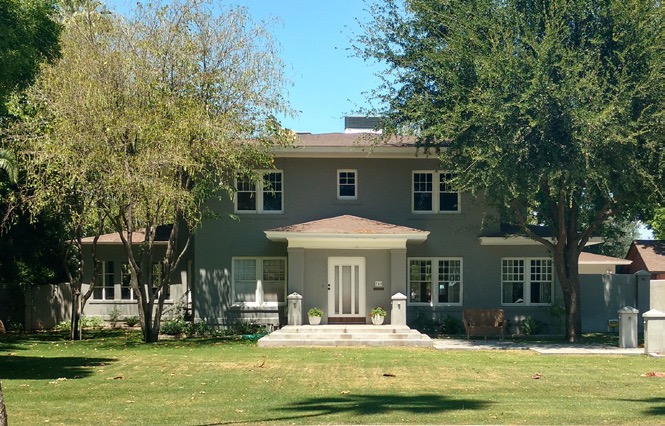
20. Los Olivos
Primarily recognized for the lush landscaping and large estate homes along Monte Vista Road, the Los Olivos area is a rare collection of urban estate homes on large and private lots. Los Olivos survives as a vestige of what began as the most prestigious neighborhood in the central corridor in the early part of the 20th century. Located east of the Heard Museum, Los Olivos forms the transitional edge between downtown and the cultural district adjoining the Phoenix Art Museum and Heard Museum.
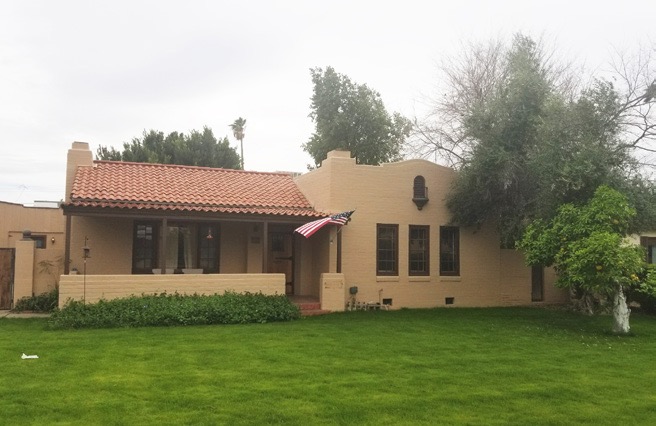
21. Margarita Place
Platted and subdivided in 1924, the original owner auctioned lots to individual builders, but the strategy did not succeed. The neighborhood was ultimately built out in the 1930s, when housing demand started again, and 12 homes were built in 1936.
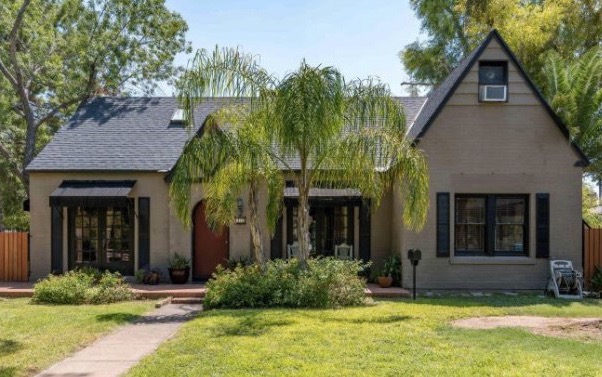
22. Medlock Place
On the northwest corner of Central and Camelback, Medlock Place was carved out of active fruit orchards in 1926. Some of the farmhouses are still in place, and the district features large lots and larger homes, set well back from the street. Medlock was never formally developed; there are no curbs, and shade trees and mature vegetation dominate the appearance. The undeveloped character is a surprise, given the proximity to the light rail, Central Avenue, Uptown Plaza and several new restaurants along Central Avenue.
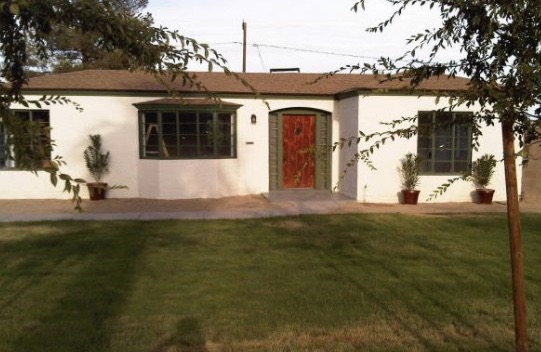
23. North Encanto
Like all the subdivisions created in the late 1930s when Phoenix was emerging from the Depression, North Encanto reflects the prevailing policies of the Federal Housing Administration. The houses are fairly standardized examples of hip-roofed, traditional ranch house forms. Houses are uniformly placed on lots so that the setback is consistent. The Flower Circle subdivision within this district is notable for the circular street plan and slightly larger and more formal examples of the French Provincial Ranch, all well-maintained. Thanks to an active neighborhood association, North Encanto and Flower Circle residents have emerged as an active and strongly engaged community in the preservation of the character and scale of houses.
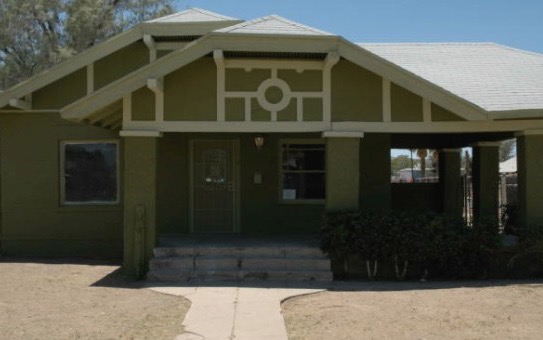
24. Oakland/University Park
The Oakland/University Park neighborhood was always a very modest working class area due to the proximity of the Southern Pacific railroad west of 19th Avenue, and the agriculture activity of the west side. The railroad was the largest employer of original Oakland residents. Although heavily impacted by urban issues, the Oakland district is undergoing a solid recovery associated with the active artists and related arts development occurring on Grand Avenue.
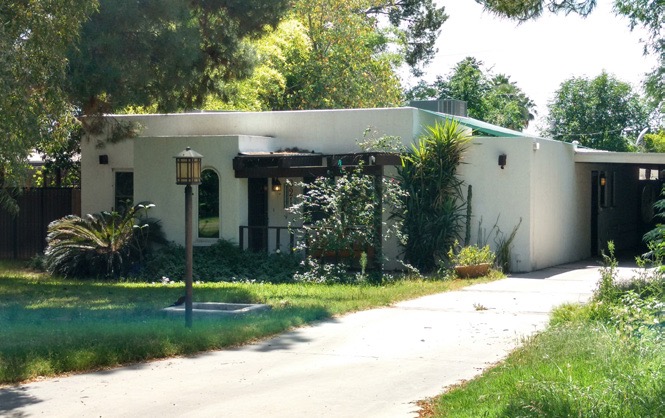
25. Phoenix Homesteads
Unique among the Phoenix districts, Phoenix Homesteads was built during the Depression by the federal Farm Security Administration, with the goal of being sustainable with subsistence farming. The large, deep lots reflect this heritage. All of the original houses were of adobe construction, and had notably large windows. This neighborhood is a clear departure from the more traditional architectural of central Phoenix at the time, and as a result is a unique, and slightly rural, enclave.
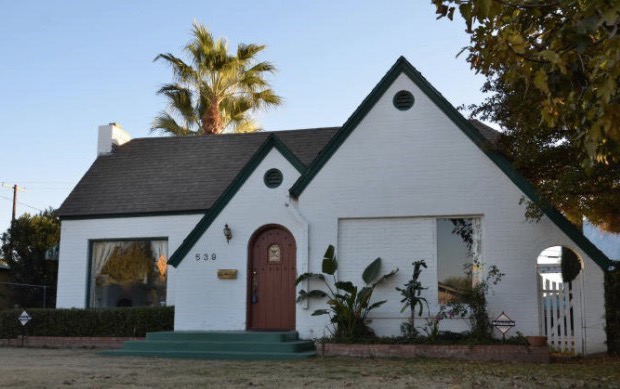
26. Pierson Place
Located at the southwest corner of Central and Camelback, Pierson Place was for many years an isolated pocket, north of the Grand Canal. The neighborhood has origins back to the late 1920s, but is mostly later 1940s ranch houses. Pierson Place is literally in the shadow of the Executive Tower condominium, a modern landmark. Due to increased neighborhood activism, and the positive impact of light rail and the action on Central Avenue, Pierson Place is rapidly emerging as an affordable option for historic and period homes in a very active part of the central core.
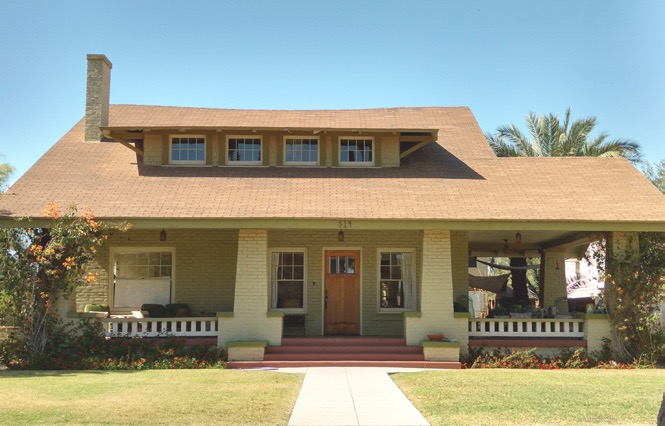
27. Roosevelt
Developed from 1912 to 1920 when the Bungalow was the new and modern concept in residential design, and craftsmanship and cobblestones blended to offer custom details for an expansive front porch. The several “streetcar subdivisions” that became the Roosevelt Neighborhood were the home of the urban elite at the time Arizona achieved statehood. It is also the neighborhood that initially spawned Phoenix’s preservation movement in the 1980s and has been thriving ever since. Embracing Hance Park and bordered by Central Avenue, Roosevelt is the transitional northern edge of the downtown core. Socially organized and active in civic affairs, Roosevelt residents are known for speaking out on urban development issues that impact the neighborhood.

28. Roosevelt Park
One of the few viable historic neighborhoods in the southern tier of central Phoenix, Roosevelt Park is a collection of houses in a subdivision developed in 1924 by land baron Dwight Heard. The neighborhood is near the former Heard Ranch. The very modest houses sit on large lots, lending a very rural, agricultural feeling. The district is an isolated node that reflects the agricultural heritage of south Phoenix, and the type of isolated development that was occurring in outlying areas far from the city core, concurrently with city’s urban growth in the early twentieth century.
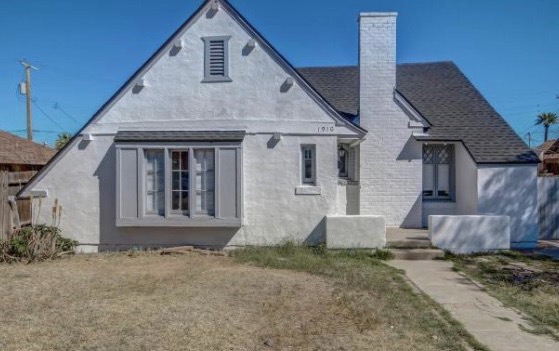
29. Villa Verde
This neighborhood was platted in 1924 by Frank Wallace, who built most of the homes in variations of the English Tudor style. Although the houses are small, Villa Verde offers opportunities for rehabilitation.
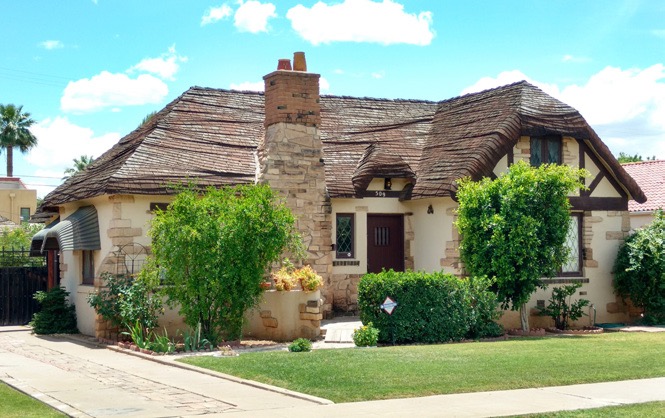
30. Willo
With a name coined from the original Wilshire and Los Olivos subdivisions, Willo is arguably the most well-known, or at least most promoted of the historic districts. Encompassing nearly 1000 houses of all styles, Willo transitions from Bungalows at the south end near McDowell, to larger, late 1930s ranches at the north – built when the Ranch house was merging stylistically with the Moderne and Deco styles, resulting in a very interesting blend that was the cutting-edge of architectural design in the late 1930s. One of the city’s most socially cohesive districts, Willo has a very strong tradition of preservation, illustrated by the hugely popular annual home tour that is a civic event known throughout the Valley.
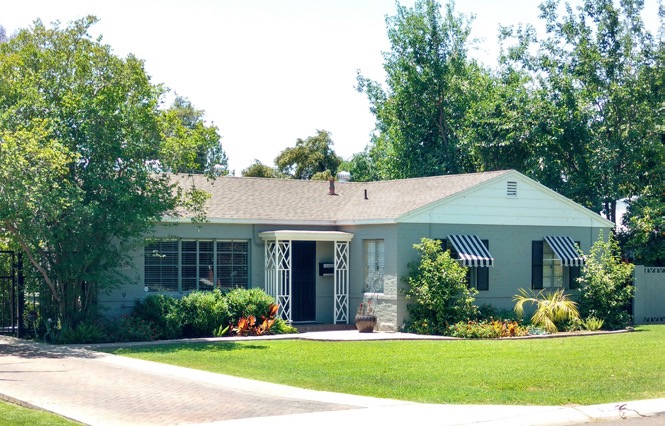
31. Windsor Square
The historic district that is decidedly “uptown” at Central and Camelback, Windsor Square borders the core of new restaurants and bars that make uptown Phoenix vibrant and hip. Within walking distance to the light rail line, or a short drive to Biltmore Fashion Park, Windsor Square might have the best location in the central corridor for 24-hour action. Platted in 1928 with a curvilinear street plan, Windsor Square boasts a handful of the original Spanish Colonial houses. Building halted in 1929 due to the Depression, and much of the neighborhood was built out in the mid-late 1930s with architect-designed, custom ranches for the affluent owners who demanded cutting-edge design and style. What resulted is a blending of the ranch form with the last vestiges of the various Revival details that is visible in Windsor Square. Several Art Deco and Moderne designs add to the overall diversity of one of the most sought-after locations in central Phoenix.
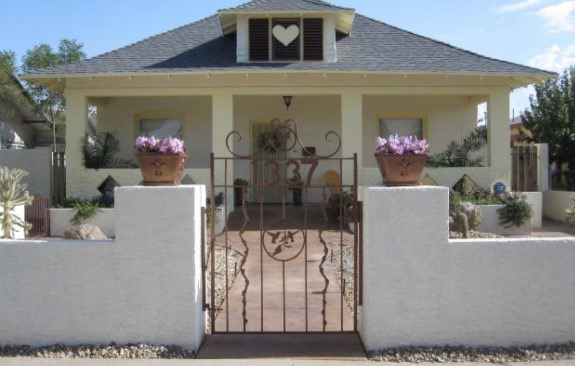
32. Woodland
The Woodland neighborhood contains some of the earliest Bungalows in the city, several dating from the pre-statehood era prior to 1912. Statehood brought growth throughout Phoenix, especially the areas adjacent to the State Capitol. Although impacted by various urban issues, Woodland is recovering and being revitalized due largely to its location. Several infill projects have attracted new residents to a neighborhood where residents can walk to the various State offices.
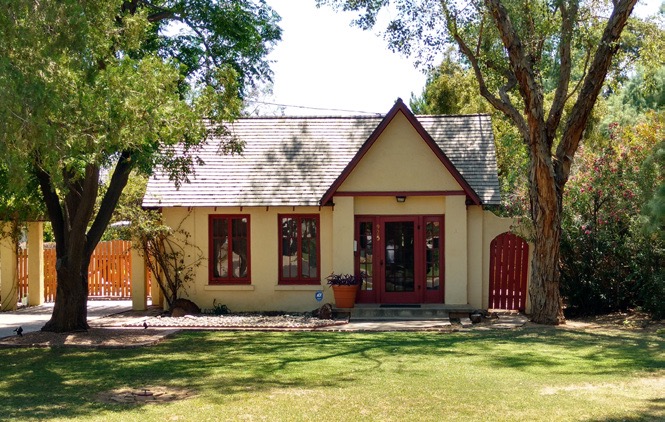
33. Woodlea
Typical of the districts along the western side of 7th Avenue, Woodlea is a neighborhood established in the late 1920s, but not developed until the 1940s. Houses are a blend of ranch styles located in a neighborhood with shade trees and extensive vegetation. Woodlea is also convenient to the Melrose retail area along 7th Avenue.
Let’s work together to make the home buying or selling process easier and more rewarding than ever.

